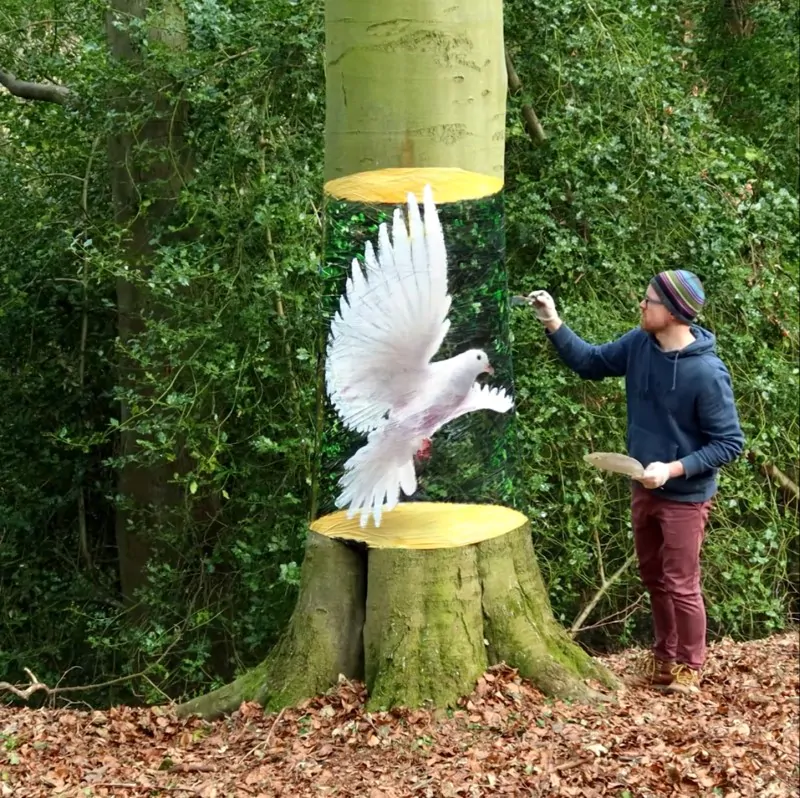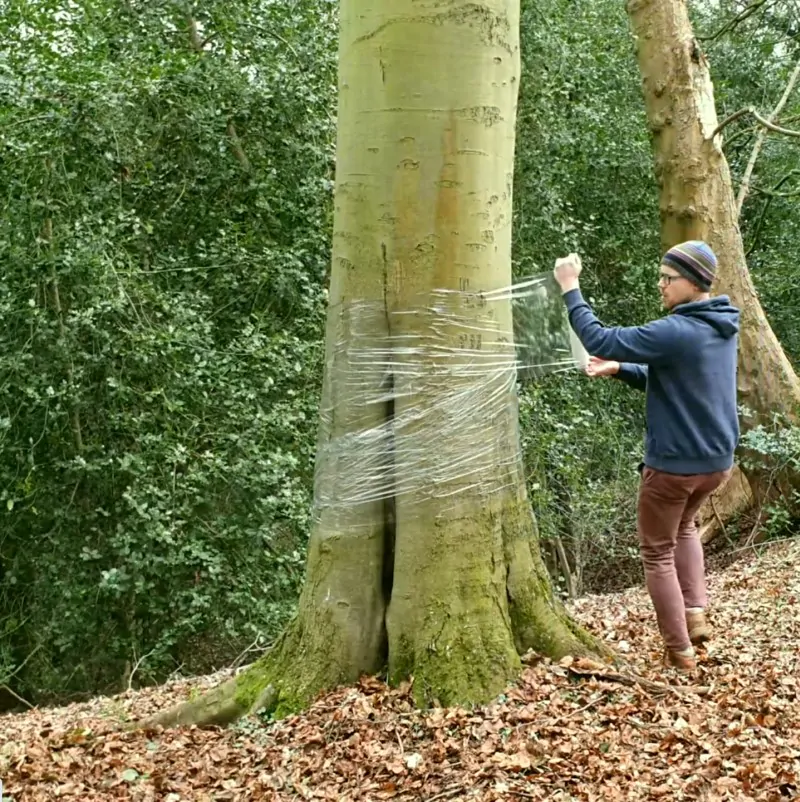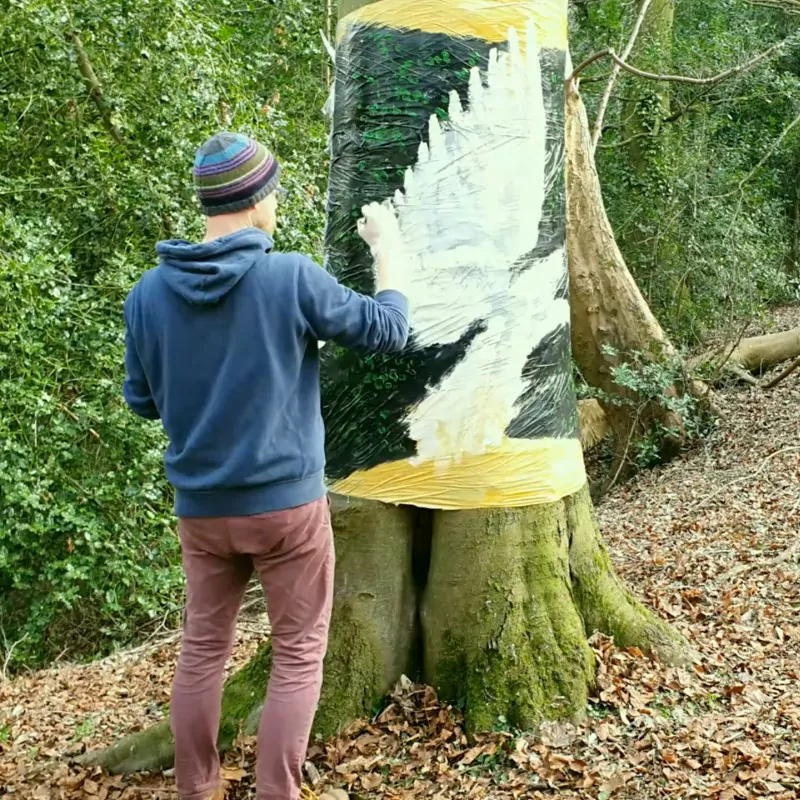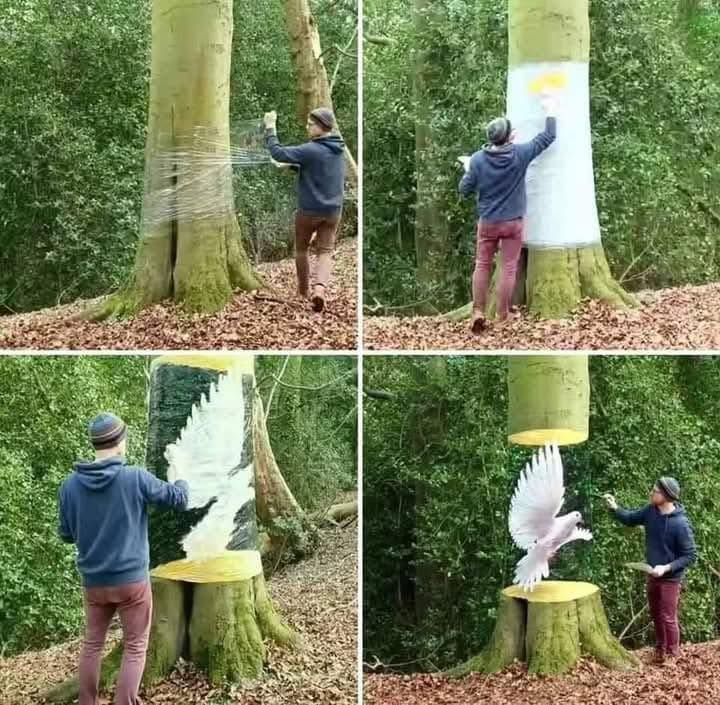In the world of art, creativity has no boundaries, and some artists push the limits of traditional mediums in extraordinary ways. One such artist is Howard Lee, a visionary who has redefined the concept of nature-inspired art by transforming the trunks of trees into breathtaking 3D masterpieces—all without harming the tree.

The Artistic Vision of Howard Lee
Howard Lee, a self-taught artist and environmental advocate, has developed a unique technique for carving intricate, lifelike 3D sculptures into the bark of trees. His tree trunk art—which includes everything from animals and human faces to abstract forms and intricate patterns—has captured the imagination of art enthusiasts and environmentalists alike. The best part? His work is done in such a way that it does not damage the tree, allowing it to continue growing and thriving.


Lee’s career as an artist began relatively unassumingly, but over time, he discovered a deep connection with the natural world. Inspired by the idea of combining art with nature, he began experimenting with carving into trees in a way that would honor the life of the tree rather than harm it. His approach to tree trunk art is gentle and measured, using techniques that allow the tree to continue its growth while the artwork takes shape.
The Story Behind the Art
Howard Lee’s inspiration for his 3D tree trunk art came from a desire to merge creativity with conservation. As a child, he was fascinated by nature, often spending time in the woods near his home, sketching trees and wildlife. As he grew older, his love for the environment deepened, and he wanted to find a way to give back to the world he admired so much.

In a turning point moment, Lee was walking through a forest when he noticed the intricate textures of a tree’s bark. He began to wonder: could art be created directly on the tree without damaging it? After much experimentation and trial and error, Lee discovered that by using precise carving tools and techniques, he could create detailed, raised designs on the tree’s surface while ensuring that the tree’s bark and core remained intact. This process allowed the tree to continue absorbing nutrients, grow naturally, and even heal the carved areas over time.
How It Works: Carving Without Harm
Lee’s process is an art form that requires delicate balance and a deep understanding of both trees and the materials he’s working with. Instead of using heavy equipment or making deep cuts, he uses specialized, sharp carving tools to carefully etch designs onto the surface of the bark. These carvings are typically shallow enough not to disrupt the tree’s ability to transport water and nutrients.
Importantly, Lee only chooses trees that are strong and healthy, ensuring that the carving process does not cause harm. He often works on trees that are older and well-established, as they can withstand minor disturbances to the bark without detrimental effects. Additionally, he takes great care to follow ethical guidelines, ensuring that the art enhances the beauty of the tree rather than diminishes it.
Career Highlights and Notable Projects
Howard Lee has created countless works of 3D tree trunk art across the world, with some of his most famous pieces being displayed in public parks, nature reserves, and even private collections. One of his standout pieces was created on a 500-year-old oak tree in a community park, where he carved the faces of historical figures into the trunk, beautifully blending art, history, and nature. The project not only brought together local communities but also became a symbol of sustainable art practices.

Another notable project involved Lee collaborating with environmental organizations to raise awareness about deforestation. He created an installation on a series of endangered trees, highlighting the importance of conservation while celebrating the natural beauty of the trees themselves. This project garnered attention from both art critics and environmental activists, bringing much-needed attention to the fragility of our planet’s forests.
The Moral Behind the Art

While Howard Lee’s work is visually stunning, it also carries a deeper message. His art serves as a powerful reminder that humans can coexist with nature in harmonious and respectful ways. In an era where environmental degradation and deforestation are major global concerns, Lee’s tree trunk art highlights the importance of preserving nature while celebrating its beauty through artistic expression.
Moreover, Lee’s work challenges conventional ideas about what art should be. By carving directly onto living trees, he invites us to reconsider the boundaries of art and nature, showing that sometimes the most profound creations emerge when we choose to work with nature, not against it.

